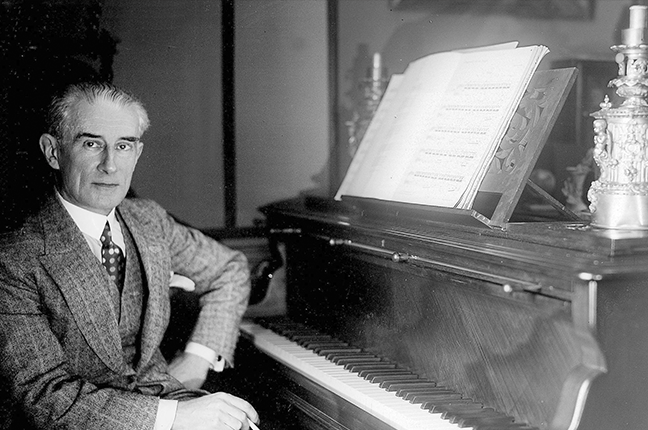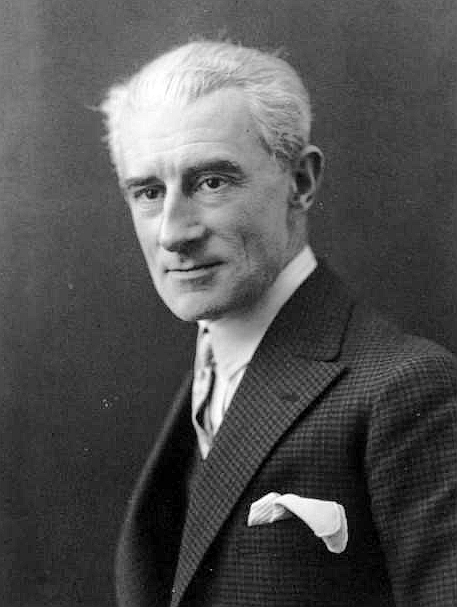Maurice Ravel (1875-1937) stands as a monumental figure in 20th-century classical music, celebrated for his unique and innovative compositions. His works are a blend of classical traditions with modern flair, resulting in pieces that captivate audiences with their intricate textures, rich harmonies, and vibrant orchestration. Here, we explore the 10 best songs by Ravel, delving into the essence of his musical genius.
1. Boléro
Composed: 1928
Highlight: A hypnotic rhythm that builds to an exhilarating crescendo.
Ravel’s Boléro is arguably his most famous composition. Initially composed as a ballet, its repetitive theme and escalating intensity make it a masterclass in orchestration. The piece begins with a solo snare drum rhythm, gradually introducing different instruments, creating a mesmerizing, inexorable buildup to a powerful climax.
2. Pavane pour une infante défunte (Pavane for a Dead Princess)
Composed: 1899
Highlight: Melancholic and graceful, with a hauntingly beautiful melody.
The Pavane pour une infante défunte is a delicate, mournful piece for piano, later orchestrated by Ravel. It captures the elegance of a pavane dance while evoking a nostalgic aura of a bygone era. Its wistful melody and gentle rhythm have made it a beloved staple in the classical repertoire.
3. Daphnis et Chloé
Composed: 1912
Highlight: Lush orchestration and vivid, impressionistic storytelling.
Daphnis et Chloé is a ballet score that showcases Ravel’s gift for creating lush, atmospheric soundscapes. The suite derived from the ballet is particularly famous, with the “Lever du jour” (Daybreak) segment celebrated for its ethereal beauty. The work is a sonic tapestry, weaving together impressionistic orchestration and dynamic rhythms.
4. Rapsodie espagnole
Composed: 1907-1908
Highlight: Evocative Spanish themes and vibrant orchestration.
Ravel’s Rapsodie espagnole is a colorful orchestral piece that pays homage to Spanish music and dance. Composed of four movements, it features a rich palette of orchestral colors, capturing the essence of Spanish rhythms and melodies. The work stands as a testament to Ravel’s ability to blend exotic influences with his unique compositional voice.
5. La Valse
Composed: 1920
Highlight: A grand, swirling waltz that transitions from elegance to frenzy.
La Valse is a choreographic poem that transforms the traditional waltz into a powerful and, at times, unsettling musical journey. Starting with a dreamy, mysterious introduction, the piece evolves into a sweeping dance, ultimately descending into a wild and tumultuous conclusion. It’s a fascinating exploration of the waltz genre.
6. Gaspard de la nuit
Composed: 1908
Highlight: Technically demanding and evocative, with a dark, fantastical atmosphere.
Gaspard de la nuit is a suite of three piano pieces, each inspired by poems by Aloysius Bertrand. The pieces—“Ondine,” “Le Gibet,” and “Scarbo”—are known for their technical difficulty and vivid imagery, painting a musical portrait of water nymphs, a hanged man, and a mischievous goblin, respectively. It remains one of the pinnacles of the piano repertoire.
7. Tzigane
Composed: 1924
Highlight: A virtuosic rhapsody for violin and piano (or orchestra) infused with gypsy flair.
Tzigane is a rhapsodic composition for violin and piano (later orchestrated by Ravel), inspired by the virtuosity and style of Romani music. The piece opens with a dramatic, unaccompanied violin solo, followed by a lively, intricate interplay between the violin and piano (or orchestra). It showcases Ravel’s ability to blend classical form with folk elements.
8. Ma Mère l’Oye (Mother Goose Suite)
Composed: 1910
Highlight: A charming and whimsical suite based on fairy tales.
Originally written for piano four hands, Ma Mère l’Oye was later orchestrated by Ravel. Each of the five movements is based on a different fairy tale, creating a magical and evocative soundscape. The suite includes enchanting pieces like “Pavane of the Sleeping Beauty” and “The Fairy Garden,” capturing the innocence and wonder of childhood stories.
9. L’enfant et les sortilèges (The Child and the Spells)
Composed: 1925
Highlight: An opera that blends humor, fantasy, and lyrical beauty.
L’enfant et les sortilèges is a one-act opera with a libretto by Colette. It tells the whimsical story of a naughty child who learns empathy and responsibility through interactions with animated objects and animals. Ravel’s music is characteristically vivid and inventive, bringing the story’s fantastical elements to life with brilliant orchestration and memorable melodies.
10. String Quartet in F Major
Composed: 1903
Highlight: A blend of classical form with innovative harmonies and textures.
Ravel’s String Quartet in F Major is his only work for string quartet and remains a cornerstone of the chamber music repertoire. It combines traditional quartet writing with Ravel’s distinctive harmonic language, featuring a lyrical first movement, a lively and rhythmic second, a delicate third, and a dynamic, energetic finale.
Conclusion
Maurice Ravel’s compositions continue to enchant listeners with their masterful blend of technical prowess, evocative imagery, and innovative orchestration. From the rhythmic drive of Boléro to the fantastical world of Gaspard de la nuit, his works offer a rich and varied exploration of the possibilities of music. Whether you’re a lifelong fan or a new listener, Ravel’s music invites you on a journey through the enchanting landscapes of his imagination.


Comments are closed